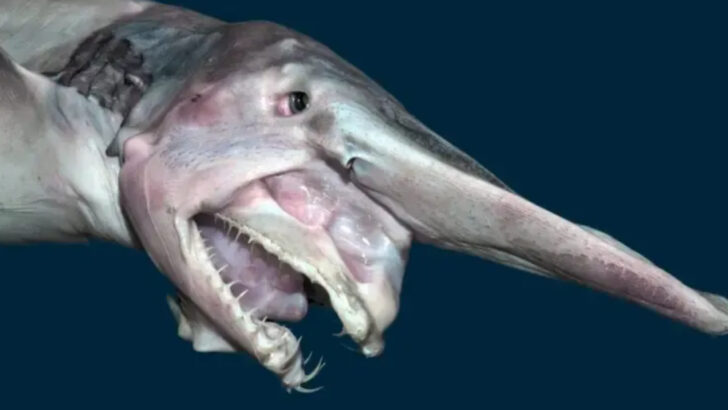The goblin shark is a nightmare from the depths, and no, it’s not from some horror movie—it’s real.
Imagine a shark that looks like it’s been pulled straight out of a prehistoric nightmare, with a nose that could only belong to something straight out of a monster movie. But wait, it gets weirder. Its jaw? A slingshot.
This terrifying creature isn’t just about its spooky looks.
It can launch its face at prey with the force of a horror movie villain pulling out a trap.
Living in the abyss, this shark has mastered the art of being truly bizarre—freaky, freakishly awesome, and oddly fascinating all at once.
It might be rare, it might be strange, but the goblin shark is a reminder that the ocean still has secrets we can’t even begin to understand.
Mysterious Deep Dweller

Lurking in the murky depths of the ocean, the goblin shark is a mysterious creature rarely seen by humans. Its favorite haunts are deep underwater canyons and continental slopes, residing at depths of over 1,000 meters. This elusive habitat makes it a rare subject for study.
Despite its intimidating appearance, it remains largely a mystery, with much of its life still unexplained. Marine researchers often rely on the few specimens accidentally caught by deep-sea fishers for data. Its elusive nature adds to the intrigue surrounding this rare shark species.
A Living Fossil
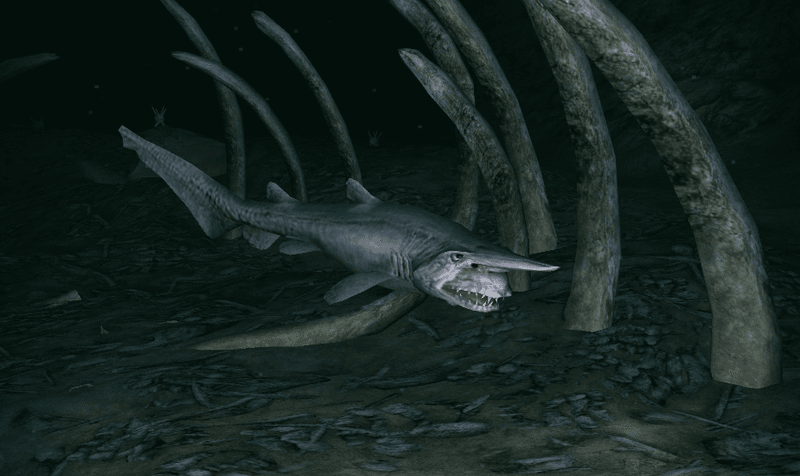
The goblin shark is often referred to as a ‘living fossil,’ a testament to its ancient lineage. This species has changed little since its ancestors swam the seas 125 million years ago. The fossil record shows its long evolutionary history, linking it to prehistoric sharks.
Its unique features, such as the elongated snout and flabby body, highlight the adaptations that have helped it survive through epochs. The goblin shark’s unchanged existence offers scientists a glimpse into the distant past of our planet’s marine life.
Slingshot Jaw Mechanism

One of the goblin shark’s most astonishing features is its slingshot-like jaw. This jaw can rapidly extend to capture prey, a unique adaptation among sharks. When it senses prey, the jaw protrudes forward with incredible speed, snatching the unsuspecting target.
This mechanism allows it to catch swift-moving prey without a chase, showcasing its efficiency as a predator. The slingshot jaw is a marvel of evolutionary design, highlighting the goblin shark’s specialized hunting strategy in the dark ocean depths.
Intriguing Pink Hue
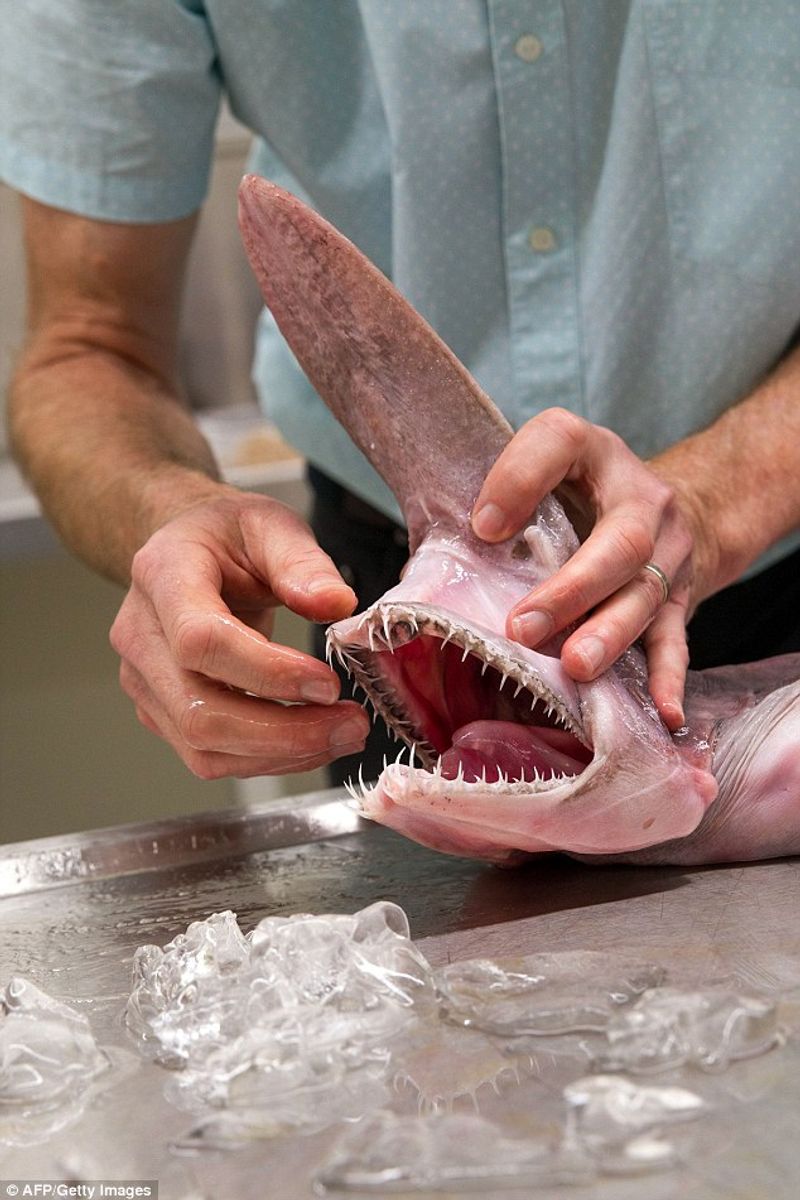
The goblin shark’s skin is notable for its pinkish hue, a result of blood vessels close to the skin’s surface. This color is most visible underwater, where it contrasts with the blue ocean backdrop. It’s a distinctive feature that sets it apart from other sharks.
The unusual coloration may serve as camouflage, helping it blend seamlessly into the ocean depths. The pink hue adds to its mystique, making it a fascinating subject for marine biologists and enthusiasts alike, drawing them into its world.
Rarely Seen Wonder
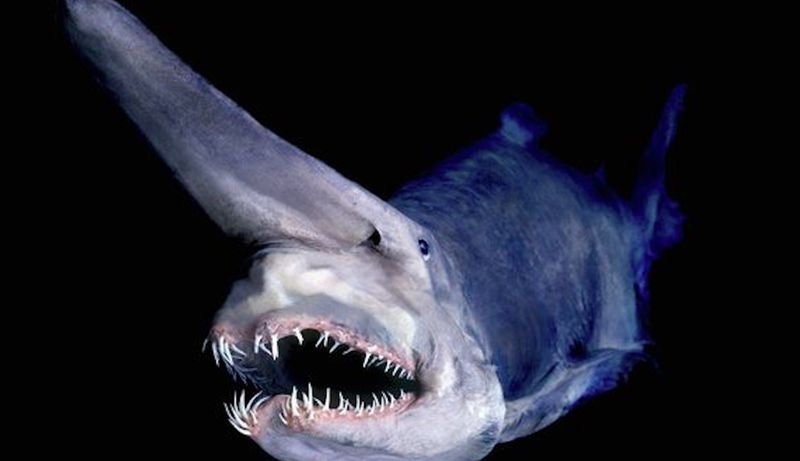
Sightings of the goblin shark are exceptionally rare, with most encounters occurring by chance through deep-sea fishing or exploration. Its preference for deep waters makes it a challenging subject for study.
The few opportunities to observe it have provided limited insight into its behavior and biology. Each sighting is a scientific treasure, offering a brief glimpse into its enigmatic world. The rarity of these encounters heightens its allure and adds an air of mystery to this elusive sea dweller.
Unique Sensory System
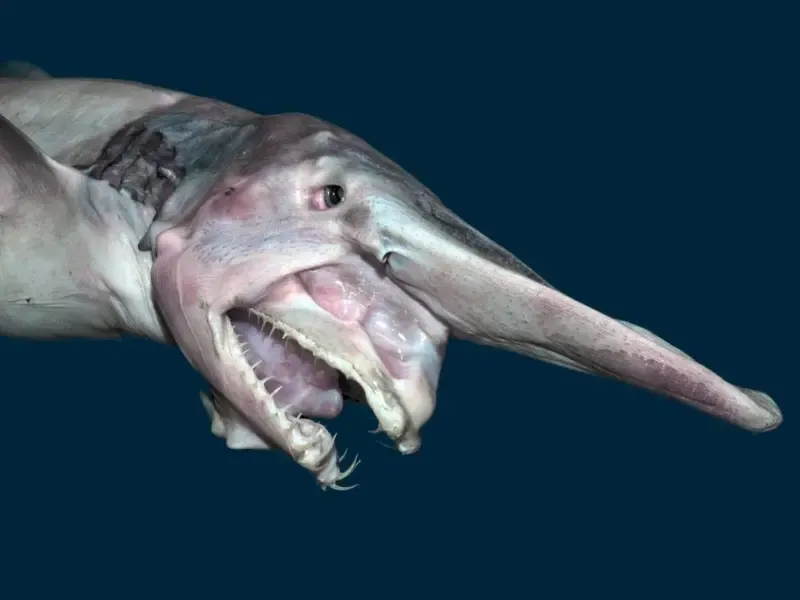
The goblin shark boasts a unique sensory system, centered around its elongated snout. This snout is equipped with specialized sensors known as ampullae of Lorenzini. These electroreceptors detect electric fields generated by prey, aiding it in hunting in the pitch-black ocean depths.
This adaptation allows the goblin shark to locate prey without relying on sight. Such sensory prowess is crucial for survival in its deep-sea habitat. It exemplifies the goblin shark’s evolutionary ingenuity, making it a formidable predator despite its sluggish appearance.
Flabby Body Structure
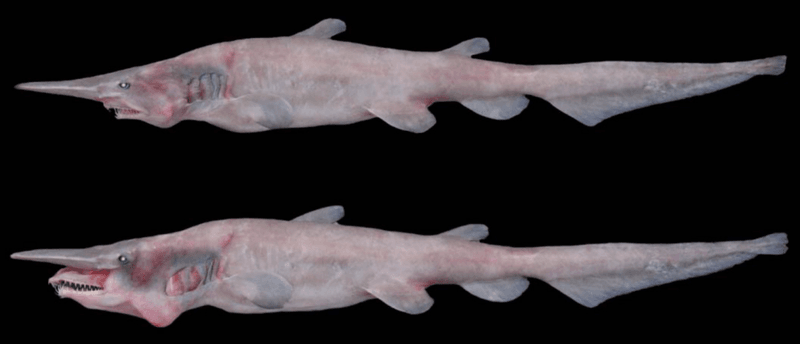
Contrary to the streamlined bodies of most sharks, the goblin shark is distinguished by its flabby, soft physique. This body structure is suited for life in deep-sea environments, where buoyancy is more important than speed.
The softer body allows for energy conservation while floating in the water column. Its unusual physical traits underscore the adaptations required to thrive in its unique habitat. This flabby body serves as a reminder of the vast diversity found within shark species and their remarkable evolutionary paths.
Ethereal Teeth Design
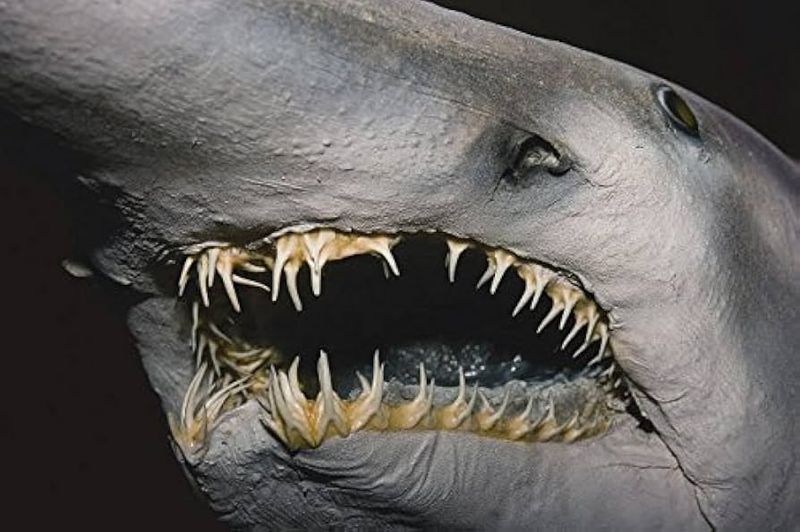
The goblin shark’s teeth are as striking as the rest of its features—slender, needle-like, and perfectly adapted for seizing slippery prey. These teeth are arranged in multiple rows, ensuring a firm grip on whatever it captures.
The ethereal design of its teeth is a key aspect of its predatory arsenal, allowing it to feast on fish and cephalopods with ease. Such specialized dentition highlights the evolutionary pressures shaping its feeding habits. The teeth’s intricate design is a testament to the goblin shark’s role as an ancient deep-sea predator.
Wide Geographic Range
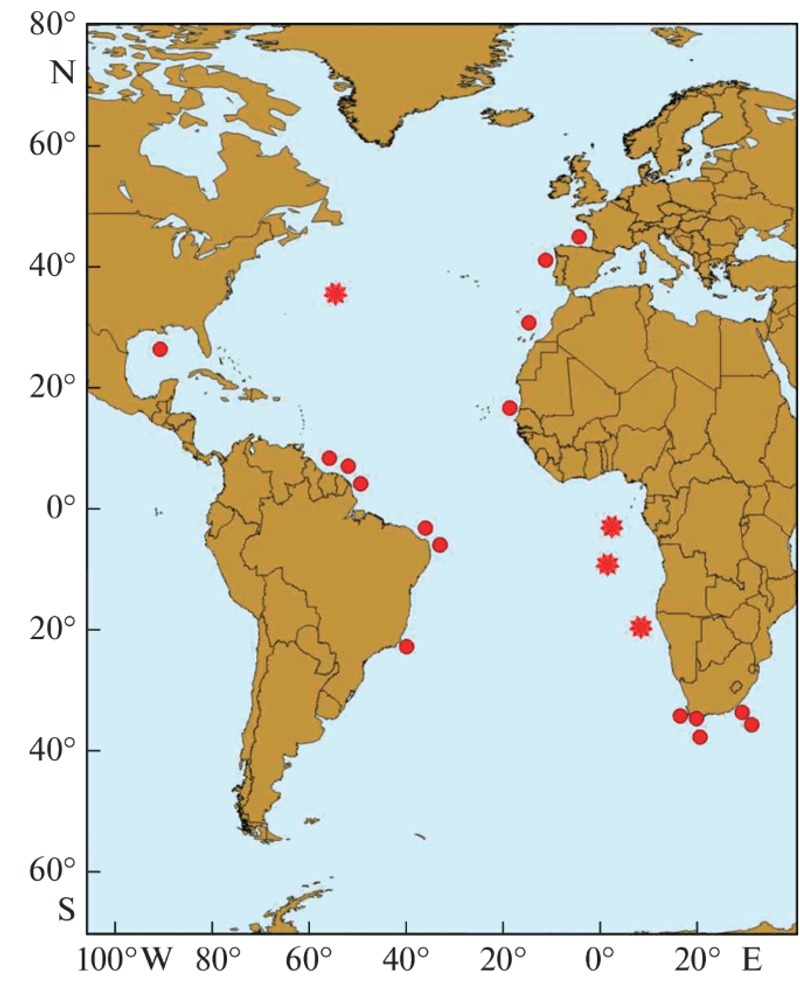
Though rarely seen, the goblin shark inhabits a wide geographic range, with sightings reported from Japan to South Africa, and the Gulf of Mexico to New Zealand. This wide distribution suggests a successful adaptation to various deep-sea environments across the world.
Its presence in diverse locations highlights the goblin shark’s resilience and adaptability. Understanding its global distribution can offer insights into the ecological roles it may play in different oceanic ecosystems. This wide-ranging habitat also reflects its mysterious nature, as much remains unknown about its lifestyle.
Elusive Reproduction Habits

The reproductive habits of the goblin shark remain largely enigmatic. Little is known about how these mysterious creatures reproduce or nurture their young. Observations of newborn pups are scarce, leaving much to the imagination.
Scientists hypothesize that, like many deep-sea species, the goblin shark may give birth to live young, but concrete evidence is lacking. This shroud of mystery enveloping its reproductive behavior adds another layer to its allure, captivating researchers and inspiring further exploration into the secrets of the deep.
Unassuming Predatory Techniques
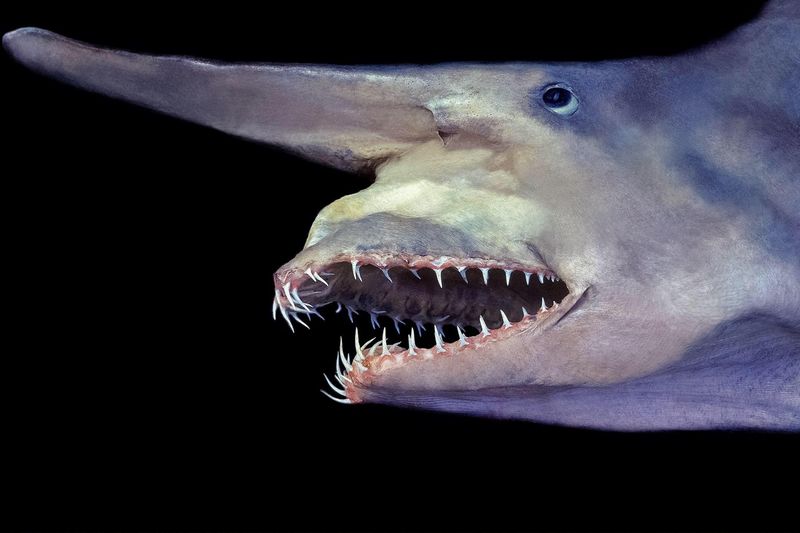
Despite its sluggish appearance, the goblin shark employs unassuming yet effective predatory techniques. It relies on stealth, using its muted coloration and slow movements to remain undetected in the deep sea.
When prey ventures too close, the goblin shark’s swift jaw extension captures it by surprise. This method contrasts with the fast-paced chases of other sharks, showcasing a different evolutionary strategy. Its subtle approach to hunting is a testament to the diverse adaptations found in nature, highlighting its quiet efficiency as a predator.
Conservation Status
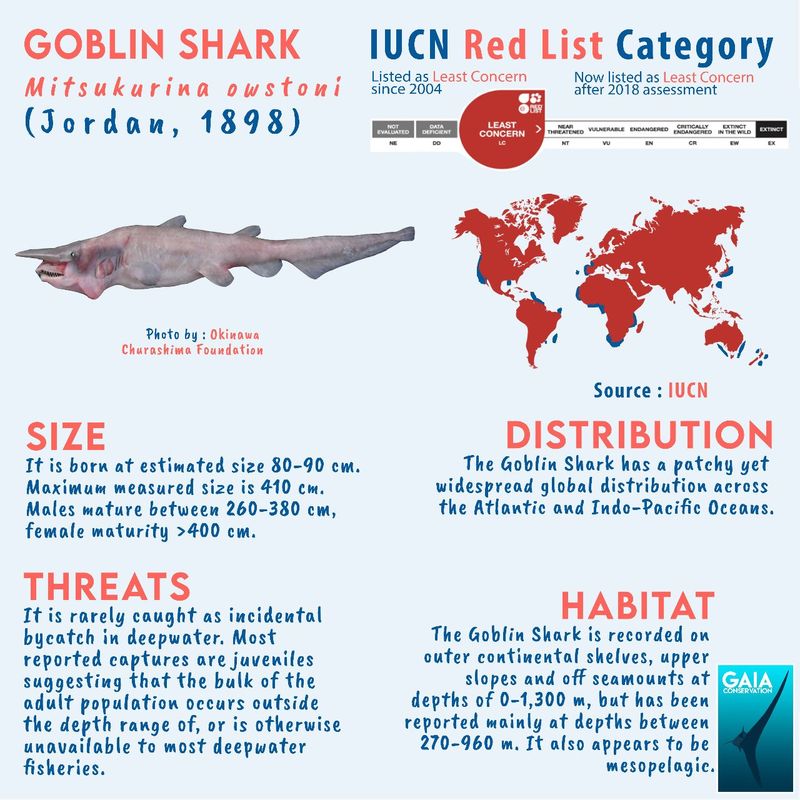
The goblin shark’s conservation status is not well-defined due to its elusive nature and limited sightings. It is not currently considered endangered, but its rarity raises concerns about its vulnerability to deep-sea fishing activities.
Understanding its population dynamics is crucial for conservation efforts. Protecting its deep-sea habitat is essential to preserving this unique species. The goblin shark serves as a reminder of the delicate balance within ocean ecosystems and the need for mindful stewardship of our planet’s marine resources.
Captivating Cultural Role
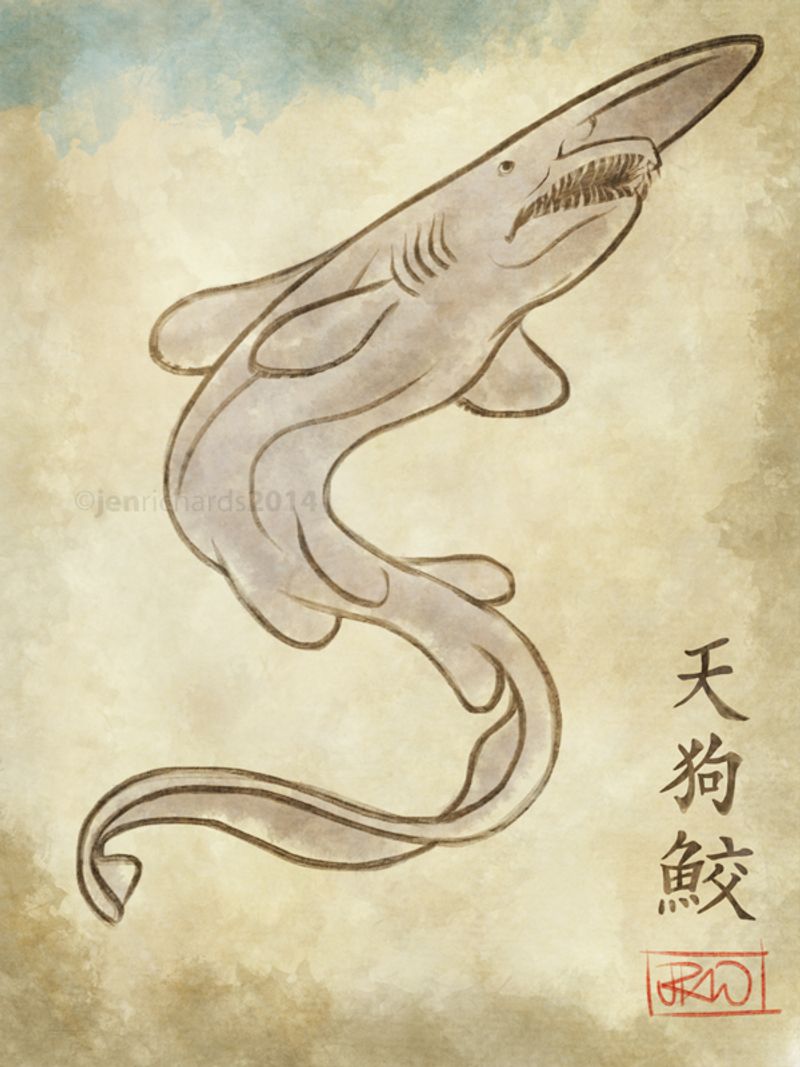
The goblin shark holds a captivating role in Japanese folklore, where it is sometimes depicted as a mythical creature. Known as ‘tengu-zame,’ it is linked to the tengu, a supernatural being with a long nose.
This cultural association underscores the shark’s mystical image, blurring the lines between reality and legend. Such folklore adds an intriguing dimension to its identity, making it a symbol of deep-sea mystery in storytelling. The cultural portrayal enriches our understanding of how humans perceive and mythologize the unknown wonders of the ocean.
Scientific Curiosity
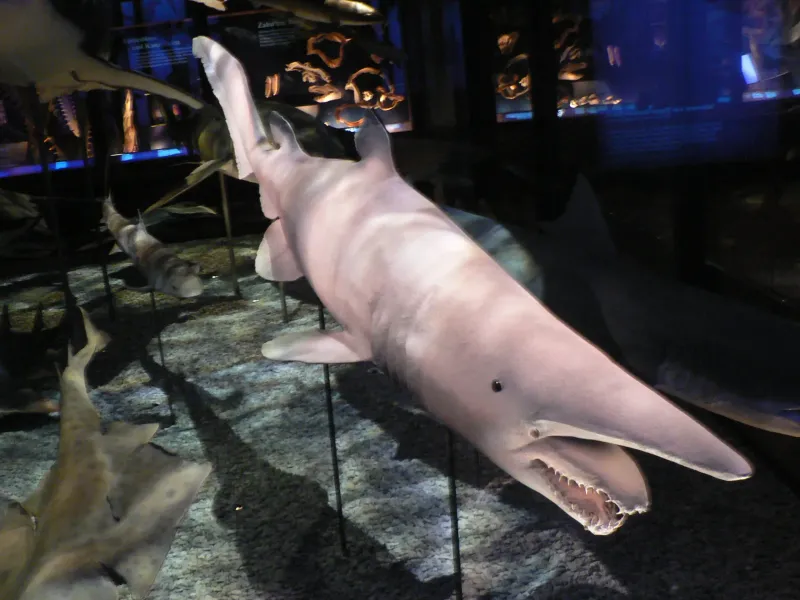
The goblin shark continues to pique the curiosity of scientists and marine biologists around the world. Each new discovery, from its feeding habits to its anatomical quirks, adds to the collective knowledge of this species.
Researchers are particularly intrigued by its ancient lineage and specialized adaptations for deep-sea life. The goblin shark’s enigmatic nature fuels ongoing research, driving scientists to unravel the mysteries of this ‘living fossil.’ Its study not only answers questions about its own existence but also sheds light on the broader evolution of sharks.

